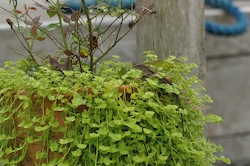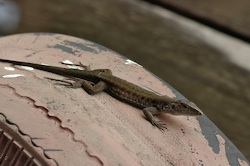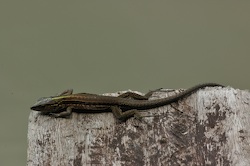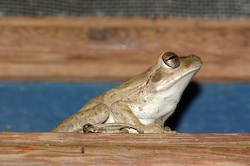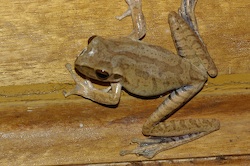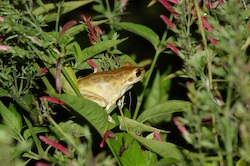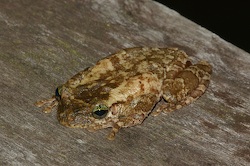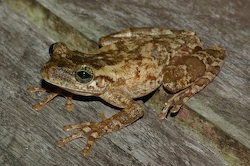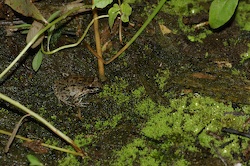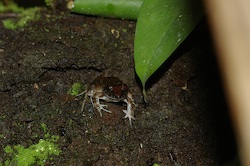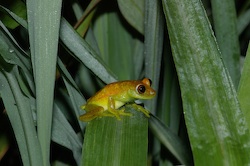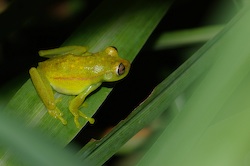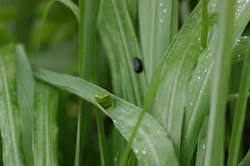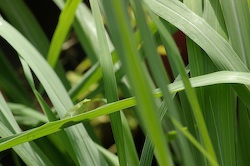|
HERPING ON UAKARI LODGE As I mentioned earlier, a good portion of each day was spent at the lodge itself. Fortunately for me, there were enough wildlife-friendly microhabitats on the grounds of the lodge that I could still engage in my favorite pastime, looking for reptiles and amphibians. For the uninitiated, this activity is called "herping", since reptiles and amphibians are colloquially known as "herps". The first herp I encountered at the lodge was an adult whiptail lizard foraging for tasty bugs in a potted plant. I followed it around for quite awhile, and it cooperated by stopping to pose in various places. Later I discovered a number of youngsters of the same species at the lodge, and at least one more adult. The first two photos here are adults and the third is a more colorful juvenile. The only candidate whiptail species listed in the published Mamirauá guide is the Cocha Whiptail (Kentropyx altamazonica). However, I'm pretty certain that these whiptails are not K. altamazonica. I believe they are instead Forest Whiptails (Kentropyx pelviceps). The only other lizard I saw at the lodge was the nocturnal Amerafrican House Gecko (Hemidactylus mabouia). It was high up on the side of a building, and pretty far away, so I didn't get any photographs this time (though I have photographed this species in Florida and in Kenya). In addition to the caimans and lizards, the lodge also had a healthy variety of frogs. I ended up seeing (I believe) five species. Of these, the most obvious were the treefrogs pictured above. The one on the left was perched just outside of the window closest to my bed, and the first six or seven hours of darkness on our first night at the lodge were filled with its ear-piercing calls. I believe these are Common Bromeliad Treefrogs (Osteocephalus leprieurii). Our guide Carlos noticed this large treefrog hunkered down on the walkway near the room Monica and I were staying in. It let me take a few pictures before lifting its head, and a few more before leaping away. I believe this is a Giant Broad-headed Treefrog (Osteocephalus taurinus). A pair of small leptodactylid frogs put in an appearance each night on a mossy portion of one of the large logs that supported the floating lodge. I believe these frogs are in the Leptodactylus wagneri group, formerly considered a single species but more recently determined to be a complex of closely related species. If you have any more specific information, please send me email to let me know! These two Polkadot Treefrogs (Hyla punctata) were perched on the same potted plant outside of the main lodge building, but on different nights. It's possible that they are actually the same individual: references report that the reddish-orange color on the back grows darker each night and then lighter again the next day, and the second picture was taken two hours earlier in the night than the first picture. Finally, the weirdest-looking frog I discovered on the lodge was this Greater Hatchet-faced Treefrog (Sphaenorhynchus lacteus), which spent an entire morning sitting perfectly still on the same potted plant that had earlier housed the Polkadot Treefrogs.
|
